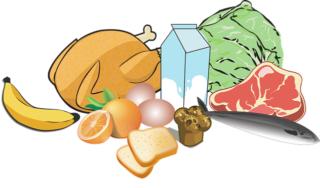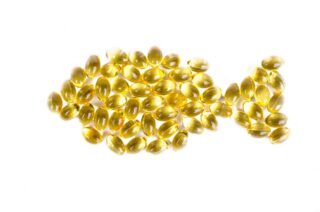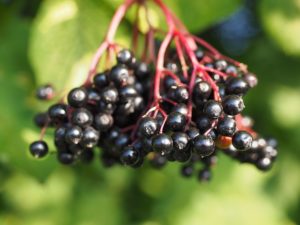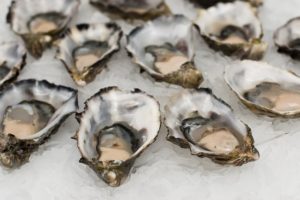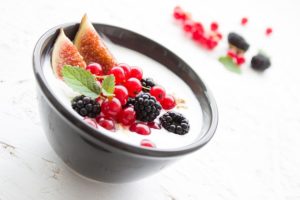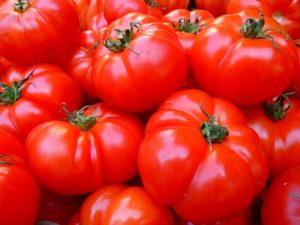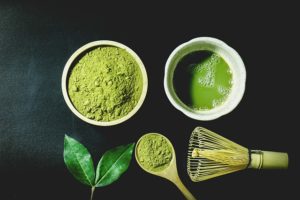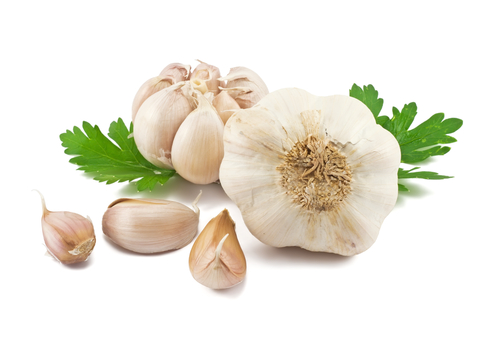What can I do beyond steroids?
If your child has eczema, you are not alone. Eczema is a common skin condition affects about 10 to 20 percent of infants and about 3 percent of adults and children. While there is no cure, eczema can be managed with medical treatments and home care. The goal is to reduce inflammation and itchiness, and to prevent new flare-ups. When using steroidal creams for treatment, many parents wonder if there are natural ways to soothe their child’s eczema flare-ups?
The good news is that there are! When used alone or together with steroids, these natural treatments can help manage your child’s eczema flare-ups:
Food Sensitivity Testing
With eczema, the skin is a reflection of what’s going on inside the body – specifically in the gut. A food sensitivity test can help assess intestinal permeability (leaky gut) and inflammation. Once problem foods are identified, they can be eliminated from the diet, which can help reduce inflammation and improve gut health.
Probiotics
Probiotic strains may help balance the immune system and reduce inflammation. Probiotics can be taken orally in the form of supplements or food (such as yogurt).
Omega 3 Fatty Acids
These healthy fats promote a healthy lipid bilayer, which helps keep skin hydrated and supple. Omega 3 fatty acids can be taken orally in supplement form or applied topically as part of a natural eczema cream.
Vitamin D3
Vitamin D3 is a natural anti-inflammatory vitamin that helps boost the immune system. It can be taken orally in supplement form or applied topically as part of a natural eczema cream.
Zinc
Zinc is an essential mineral that plays a role in immune function and tissue repair. It can be taken orally in supplement form or applied topically as part of a natural eczema cream.
Conclusion
While there is no cure for eczema, it can be managed with medical treatments and home care. When used alone or together with steroids, these natural treatments can help soothe your child’s eczema flare-ups: food sensitivity testing, probiotics, omega 3 fatty acids, vitamin D3, zinc.
Book an appointment today!
Cold and Flu season is here! Now that kids are back to school and the season is changing we should start thinking about preventing colds and flu. As a Naturopathic Doctor part of my job is counseling parents on safe and effective ways to treat and prevent colds and flu for the whole family. Here are 5 things that will help prevent colds and flu and can even help to ameliorate symptoms and shorten duration of an active infection.
-
Probiotics
Probiotics help boost the immune system – Studies have shown that probiotics affect immune cells throughout the body. When certain strains of probiotics are introduced into our intestine they help to repair intestinal cells and they boost production of antimicrobial substances. In one study, 326 children aged 3-5 years were randomly assigned to receive, in double-blind fashion, probiotic supplementation. Treatments were given twice per day in divided doses for 6 months, including the winter season. Compared with placebo, the probiotic group had the following results; fever reduction 53-73%, cough reduction 41-62%, decreased runny nose 28-59%, decreased need for antibiotics 68-82%, reduced absence from school 28-32%.
-
Elderberry
Elderberry extracts inhibit bacteria and viruses – Not only does elderberry syrup taste great, studies have shown that it inhibits the bacteria and viruses associated with common colds and the flu. One study demonstrated that an elderberry liquid extract possesses antimicrobial activity against both streptococci bacteria and influenza viruses. Another study looked at 312 air travellers flying from Australia to an overseas destination. Those travellers who took an elderberry extract before, during and after travel had fewer colds, less sick days and less symptoms.
-
Vitamin C
Vitamin C supports immune cells – Vitamin C is very important for optimal immune system functioning. Vitamin C helps immune cells get to where they need to be, kill pathogens effectively, protect the body from damage and clean up after battling infections. Studies have shown that adequate vitamin C in the blood helps prevent infections, is necessary to fight infections and helps with recovery. The recommended daily intake of vitamin C is 100-200mg/day; however during active infection, the metabolic demand increases and therefore the requirement for vitamin C is likely to be higher. Even in this day and age, vitamin C is the fourth leading nutrient deficiency in North America. Poor diet and increases in free radical exposure due to an unhealthy lifestyle may be contributing factors. Excellent sources of vitamin C are Broccoli, Citrus Fruits and Berries.
-
Zinc
Zinc is essential for immune system communication – The importance of zinc for proper immune function has been well established. Zinc deficiency undoubtedly causes immune system malfunction. The cells of our body are in constant communication. During infection there is a need for effective communication between immune cells in order to get rid of the “bad guys”. Communication happens in the form of chemical messengers and enzymes. Zinc is an essential component of these chemicals and enzymes. As with vitamin C, during active infection our requirement for zinc is likely to increase. Studies have shown that Zinc supplementation during infection can shorten the duration of the illness. Excellent dietary sources of zinc include: Meat, Shellfish, Legumes, Nuts and Seeds. Supplementation may be important with a vegan or vegetarian diet.
-
Vitamin D
Vitamin D is the supervisor of the immune system –Vitamin D has many functions in the body, and receptors for vitamin D can be found on many different tissues. One important function for vitamin D is in the modulation of our immune system. Studies have suggested that vitamin D is able to both calm down and rev-up the immune system according to what our body needs it to do. This is why Vitamin D is thought to be as important in autoimmune disorders as it is in infections.
Vitamin D deficiency can cause the immune system to behave erratically. Unfortunately in Canada we have one of the highest incidences of vitamin D deficiency in the world. Our primary source of vitamin D is from sunlight and therefore supplementation becomes important especially during the winter months. Studies have shown that there is a higher incidence of upper respiratory tract infections in athletes who are deficient in the vitamin and who train in the wintertime. Supplementation had preventative and symptom reducing effects. Aside from sunlight, some dietary sources of vitamin D are: fortified foods, fatty fish, beef liver, egg yolks and cheese.
Even vitamins and minerals at high dosages can be dangerous, especially in children. It is always recommended to consult with a health care professional, such as a Naturopathic Doctor, before supplementing on your own.
[button size=”btn-large” link=”https://doctorshawn.ca/contact-us/” target=”_blank” ]Book an appointment today![/button]
Leyer, GJ et al. Probiotic effects on cold and influenza-like symptom incidence and duration in children. Pediatrics 2009; 124-179. Walker, WA. Mechanisms of action of probiotics. Clin Infect Dis. 2008; 46 (Suppl2): S87-91.
Curr Opin Gastroenterol. 2011 October ; 27(6): 496–501. doi:10.1097/MOG.0b013e32834baa4d. Probiotics and immune health Fang Yana and D.B. Polkb,c,d
Elderberry Supplementation Reduces Cold Duration
and Symptoms in Air-Travellers: A Randomized,
Double-Blind Placebo-Controlled Clinical Trial Evelin Tiralongo 1,2, *, Shirley S. Wee 2,3 and Rodney A. Lea 4 Received: 8 February 2016; Accepted: 18 March 2016; Published: 24 March 2016
Krawitz et al. BMC Complementary and Alternative Medicine 2011, 11:16
http://www.biomedcentral.com/1472-6882/11/16
Inhibitory activity of a standardized elderberry
liquid extract against clinically-relevant human
respiratory bacterial pathogens and influenza A
and B viruses Christian Krawitz1†, Mobarak Abu Mraheil1†, Michael Stein2, Can Imirzalioglu1, Eugen Domann1, Stephan Pleschka2*,
Torsten Hain1*
Vitamin C and Immune Function Anitra C. Carr 1, * and Silvia Maggini 2
1 Department of Pathology, University of Otago, Christchurch, P.O. Box 4345, Christchurch 8140, New Zealand
2 Bayer Consumer Care Ltd., Peter-Merian-Strasse 84, 4002 Basel, Switzerland; silvia.maggini@bayer.com* Correspondence: anitra.carr@otago.ac.nz; Tel.: +643-364-0649 Received: 21 September 2017; Accepted: 31 October 2017; Published: 3 November 2017
Biofactors. 2014 Jan-Feb;40(1):27-40. doi: 10.1002/biof.1114. Epub 2013 Jun 27.Zinc signals and immune function. Haase H1, Rink L.
Cochrane Database Syst Rev. 2013 Jun 18;(6):CD001364. doi: 10.1002/14651858.CD001364.pub4. Zinc for the common cold.
Vitamin D3 Supplementation Reduces the Symptoms
of Upper Respiratory Tract Infection during Winter
Training in Vitamin D-Insufficient Taekwondo
Athletes: A Randomized Controlled Trial Hyun Chul Jung 1 , Myong-Won Seo 2 , Sukho Lee 3 , Sung Woo Kim 2 and Jong Kook Song 2, * 1 Department of Kinesiology, College of Health Sciences, University of Louisiana at Monroe, 700 University
Avenue, Monroe, LA 71209, USA; jung@ulm.edu
2 Department of Taekwondo, College of Physical Education, Kyung Hee University, 1732 Deokyoungdaero, Giheung-gu, Yongin-si, Gyeonggi-do 17014, Korea; smilly1004@khu.ac.kr (M.-W.S.); kswrha@khu.ac.kr (S.W.K.)
3 Department of Counseling, Health, and Kinesiology, College of Education and Human Development,Texas A&M University-San Antonio, One University Way, San Antonio, TX 78224, USA; slee@tamusa.edu* Correspondence: jksong@khu.ac.kr; Tel.: +82-31-201-2708 Received: 2 August 2018; Accepted: 10 September 2018; Published: 14 September 2018
Mechanisms Underlying the Regulation of Innate and
Adaptive Immunity by Vitamin D Ran Wei and Sylvia Christakos *
Received: 25 June 2015 ; Accepted: 15 September 2015 ; Published: 24 September 2015 Department of Microbiology, Biochemistry and Molecular Genetics, New Jersey Medical School, Rutgers, the State University of New Jersey, 185 South Orange Ave, Newark, NJ 07103, USA; weira@njms.rutgers.edu
* Correspondence: christak@njms.rutgers.edu; Tel.: +973-972-4033; Fax: +973-972-5594
Do you give your kids probiotics?
Every year it seems like the back to school commercials start to pop up earlier and
earlier in the summer months. Although these commercials are aimed at bringing
parents into office supply and clothing stores in prep for their kids returning to
school, as parents we can also use this time to implement nutritional strategies to
help our kids excel during the school year.
Besides the obvious beneficial lifestyle approaches like eating a balanced nutrient
rich diet and daily exercise, there are a few specific recommendations that may help
your kids have the edge when it comes to starting school.
[banner ]Probiotics[/banner]
Probiotics are live bacteria cultures that seem to have varying health benefits when
introduced into our gastrointestinal tract. Probiotics are naturally found in many
fermented foods such as yogurt, kefir, miso, tempeh, sauerkraut and kombucha. It is
believed that as a species, fermented foods played a larger role in our diet as we
evolved and our bodies have grown to rely on these bacterial cultures for optimal
health and wellbeing. Our modern “western” diet has been relatively low in these
fermented foods and there have been hypothesis relating many chronic diseases of
the gastrointestinal tract and immune system back to imbalanced gut bacteria.
Subsequently we have witnessed a surge in probiotics being offered in supplemental
form as a way to help restore this balance. It is important that I stress the fact that
probiotics alone are not the complete picture with regard to a healthy
gastrointestinal and immune system but research has suggested that they do play a
part.
Probiotics help boost the immune system – with kids heading back indoors and
spending large amounts of time in classrooms with each other (including daycare),
there is a dramatic increase in germ exposure and potential for kids to fall prey to
illness. In one study, 326 children aged 3-5 years were randomly assigned to
receive, in double-blind fashion, probiotic supplementation. Treatments were given
twice per day in divided doses for 6 months, including the winter season. Compared
with placebo, the probiotic group had the following results; fever reduction 53-73%,
cough reduction 41-62%, decreased runny nose 28-59%, decreased need for
antibiotics 68-82%, reduced absence from school 28-32%.
Probiotics help with allergies – Heading back indoors can trigger many kids who
are especially allergic to dusts and molds. With regard to asthmatic children with
allergic rhinitis, studies have shown the use of probiotics resulted in a significant
reduction in the inflammatory immune chemistry produced by peripheral blood
mononuclear cells. Further studies have shown specific down-regulation of T cells
(immune cells), which beneficially alter the balance of pollen specific antibodies in
seasonal allergic rhinitis. In short – probiotics lower the allergic load and decrease
inflammation.
Probiotics help with mood – Recent research is showing new gut-brain
connections as happy gut ecology seems to make for happier brains. In one
particular study, anxious mice dosed with probiotics showed lower levels of anxiety,
decreased stress hormones, and even increased brain receptors for
neurotransmitters vital in curbing worry, anxiety and fear. With better mood comes
greater ease and ability to learn in school settings and beyond.
Stay tuned for part 2 which will focus on cold/flu prevention and treatment.
Book a consultation with our Naturopathic Doctor Shawn Meirovici for
more information on child-friendly probiotic strains and dosages.
[button size=”btn-large” link=”https://doctorshawn.ca/contact-us/” target=”_blank” ]Book Now[/button]
Leyer, GJ et al. Probiotic effects on cold and influenza-like symptom incidence
and duration in children. Pediatrics 2009; 124-179.
Walker, WA. Mechanisms of action of probiotics. Clin Infect Dis. 2008; 46 (Suppl
2): S87-91.
Yang, G et al. Treatment of Allergic Rhinitis with Probiotics: An alternative
approach. N Am J Med Sci. Aug 2013; 5 (8): 465-68.
Javier, AB, Forsytthe, P & Cryan, J. Ingestion of Lactobacillus strain regulates
emotional behavior and central GABA receptor expression in mice via the vagus
nerve. Proc Natl Acad Sci USA. Sep 20, 2011; 108(38): 16050-55.
It’s the summer of 2018 and it’s a hot one. Having fun in the sun is what we dream about all winter long and while we do benefit from some sun exposure (boosting levels of vitamin D and serotonin) we must also balance sun exposure with sun protection. In this article I will outline some general guidelines with reference to safe sun exposure, getting enough vitamin D and how consuming certain foods may help further protect us during recommended exposure times.
Exposure
According to recent research we now know that vitamin D is not only important for strong healthy bones but also plays a role in preventing some chronic diseases like Multiple Sclerosis and Cancer. So we need to know some general guidelines for getting the right amount of sun exposure while helping protect ourselves from damaging UV radiation.
In 2001 the Australian Radiation Protection and Nuclear Safety Agency set out to determine daily UV radiation levels in major cities across Australia. How much sun was needed to produce adequate levels of vitamin D and how much exposure could produce damage to the skin was investigated. The general guidelines to come out of the report were as follows: In the peak of the summer, July and August in North America, “2 to 14 minutes of sun three to four times per week at midday will give fair-skinned people with 15 per cent of the body exposed the recommended amount of Vitamin D. However, redness (skin damage) can occur in only eight minutes in these conditions.
So in peak summer times from 10 am to 3pm, you should use protection against the sun; shade, hats, clothing, sunglasses and sunscreen.
But earlier in the day and later in the afternoon, for a similar period of sun exposure and vitamin D manufacture, you get much less skin damage.”(http://www.abc.net.au/health/thepulse/stories/2006/04/05/1609208.htm)
For the months just before and after the peak summer months (June and September) the study revealed that the time of sun exposure needed for adequate vitamin D levels increases to 10 to 15 minutes 3-4 times per week. In the fall, winter and early spring months we need short periods of exposure during peak times of the day 10am-3pm in order to make enough vitamin D.
Sun-Blocking Foods
The question then becomes; in those times of recommended sun exposure how do we further protect ourselves from the damage of UV radiation? Part of the answer may be in the food we eat and beverages we drink. UV radiation helps us to make important compounds such as vitamin D but it can also cause damage to our cells. Cellular damage occurs via the production of inflammation and damaging compounds called free radicals. Some important compounds in our diet that combat inflammation and free radicals are: Omega-3 fatty acids and Antioxidants.
Antioxidants are compounds found in fruits and vegetables that serve to protect the plant against the harmful effects of its environment, including UV radiation. Many of these antioxidants incur the vibrant colors we associate with fruits and vegetables onto them.
Lycopene is a powerful antioxidant found in red colored fruits and vegetables such as: Tomatoes, Watermelon, Guava, Grapefruit, Papaya and Red Peppers including Chili Pepper. Lycopene is most easily absorbed when it has been cooked, making tomato paste and cooked tomatoes an excellent source of bio-available lycopene. Not only does this antioxidant protect the fruit/vegetable from UV damage, when we consume lycopene, it protects our body as well.
Anthocyanidins are a group of antioxidants that incur free radical protection and have a dark red or purplish color. Rich sources of anthocyanidins include: Blueberries, Acai, Pomegranate, Blackberries and Cherries.
The flavonoid antioxidants in green tea include the very powerful polyphenol EGCG. EGCG has not only been shown to inhibit tumor cells in some cancers but has also been shown to protect cells from the aging effects of UV radiation. Particularly matcha green tea (pulverized powdered tea leaves) can be 137 percent higher in EGCG than regular water infused tea leaf. Dark chocolate is also very high in phenols and can incur a 25 percent increase in sun tolerance at 2 ounces of over 70% cacao per day.
Another compound important for protecting our body against the potentially harmful effects of sun exposure are omega-3 fatty acids. These fatty acids help to drive an anti-inflammatory pathway in the body. Radiation and chronic disease induces inflammation which can lead to cellular damage and premature aging. Fish is an excellent source of omega-3 fatty acids, particularly Salmon, Herring, Mackerel, Trout and Sardines. It is recommended to eat at least 2 servings of high omega-3 fish per week or to take a fish oil supplement daily.
Another good source of omega-3 fatty acids are flaxseeds. Flaxseeds also contain compounds called lignans which may protect against the development of some cancers. It is recommended to have a half teaspoon of ground flaxseeds per day or a flaxseed oil supplement.
Although these are all specific examples of foods rich in sun protecting compounds, a good general rule of thumb is too eat plenty of vibrantly colored fruits and vegetables which will undoubtedly be rich in antioxidants. It is also just as important to limit foods which can cause free radical damage and inflammation, these include: sugar and red meats.
Equip your body with sun protecting foods and follow the guidelines as to when to allow for uninhibited sun exposure. By doing so you will make the D and be problem free.
[button size=”btn-small” link=”https://doctorshawn.ca/contact-us/” target=”_blank” ]Book Now[/button]
Garlic (Allium Sativum) is an ancient therapeutic food that has been in use since the dawn of medicine. It is mentioned in the bible and has been used by all the great forefathers of modern medicine such as: Hippocrates, Galen and Dioscorides. Garlic is mentioned several times in the Ebers Papyrus, an ancient Egyptian medical text written circa 1550 B.C. Garlic was used topically and internally to treat ailments of the respiratory tract, digestive tract and for infection. Men and women would consume large quantities of garlic to prevent illness and improve endurance. Garlic bulbs have even been found buried in the tombs of Egyptian royalty, such as King Tutankhamen. Garlic continues to be one of the most powerful remedies in the modern day alternative health care practitioner’s toolbox. Fortunately, it has worked so well for so many thousands of years that a significant amount of funding has gone into researching the particular constituents contained in Garlic that lend it its medicinal properties.
Research has shown that sulfuric compounds in garlic are effective at lowering blood pressure, lowering LDL cholesterol, exploding certain cancer cells, and killing some strains of harmful bacteria. The following is an overview of some of the most compelling research on Garlic as a medicinal supplement over the past few years.
In ancient times Garlic was viewed as a tonic of the respiratory and digestive tract, however; persuasive evidence based research demonstrates that it is also a tonic for the cardiovascular system. In 2010 a double-blinded randomized placebo-controlled trial was performed on 51 coronary heart disease patients to determine the effect of time-released garlic powder tablets on the risk of heart attack and sudden death. It was demonstrated that after 1 year on the garlic supplement, men had a 1.5-fold reduced risk for serious cardiovascular disease and women had a 1.3-fold reduction in risk. The reduced risk was extrapolated through the finding that men had on average a decrease in LDL-cholesterol by 32.9 mg/dl and women had a 27.3 mg/dl decrease on the garlic supplement.
Besides high LDL-cholesterol, another marker of risk for cardiovascular disease is hypertension. A Meta-analysis that looked at 1994 randomized placebo controlled trials using garlic preparations as intervention for hypertension found that garlic was significantly more effective than placebo. In hypertensive patients garlic preparations produced an average of an 8.4 mmHg drop in systolic blood pressure and a 7.3 mmHg drop in diastolic blood pressure. A research article published in 2007 demonstrated that the polysulfuric compounds in garlic are converted into hydrogen sulfide by red blood cells. In turn, hydrogen sulfide has the ability to relax blood vessels, therefore decreasing blood pressure.
Over the past decade there have been numerous studies looking into garlic as a potential anti-cancer medicinal food. Studies, which looked at the correlations between garlic consumption and incidence of cancer, haven’t been extremely convincing in either direction. Some correlations do exist, however, which has spawned further investigation into the anti-carcinogenic properties of Garlic. A 2009 study in the journal of Clinical Cancer Research demonstrated that one of the sulfuric compounds in garlic, diallyl trisulfide, may have a beneficial effect on prostate cancer cells. Just like some breast cancers are sensitive to estrogen, some prostate cancers are sensitive to androgens, like testosterone. Bicalutamide is a drug given to some patients with prostate cancer in order to block the effect of testosterone on cancer cells. The diallyl trisulfide found in garlic has a similar effect to this medication, causing a decrease in androgen receptor protein, leading to a decrease in prostate specific antigen levels (PSA).
One of the most fascinating articles that I came across was an article published in 2008 in the Journal of Biologics: targets and therapy. The study looked at the treatment of childhood Pre-B Acute Lymphoblastic Leukemia (ALL) with preparations of garlic extracts compared to common chemotherapeutic agents used in the treatment of this illness. One of the most concerning side effects in chemotherapy treatment, especially of leukemia, is a decrease in white blood cell count and therefore a susceptibility to infection. While both the chemotherapeutic drugs and the garlic extract caused a destruction of cancerous cells, only the garlic extract was reported to not have any detrimental effect on non-cancerous white blood cells. The authors also comment on the fact that garlic is known to be an effective (around 10% the effectiveness of the antibiotic vancomycin) antimicrobial agent against many hospital acquired infective organisms.
In light of the recent cholera outbreak in Haiti, I decided to include the following study published in 2009 in the journal of Bioscience, Biotechnology and Biochemistry. In this study garlic oil was studied for its diallyl sulfide content and its antimicrobial activity against V. cholerae. The in-vitro study found the oil to have bacteriocidal effect against all tested strains of V. cholerae. It was also demonstrated that the garlic oil had an inhibitory effect on the growth of V. cholerae in contaminated food. In my opinion, it wouldn’t be a bad idea for the Centre for Disease Control and Prevention to add regular consumption of garlic to its cholerae prevention protocol in Haiti.
On a final note, I came a cross an article published in 2009 in the Journal of Agricultural and Food Chemistry that confirms the notion that fresh crushed garlic has a greater therapeutic benefit than processed garlic. This is due to a higher concentration of the sulfuric compounds that have been previously mentioned in fresh garlic. Like all food, garlic is potentially aggravating for some individuals and can cause allergic reaction in individuals with an allergy to the Alliaceae family. Be diligent when consuming garlic, especially when adding garlic to the diet of children. I have used garlic in numerous home remedies for cardiovascular health, and for upper respiratory and gastrointestinal infection. The most common complaint I get is the smell. Since the unpleasant odor of garlic is actually emitted from the inside out, it is very difficult to conceal. I have heard that consuming milk with garlic is the best way to cover it up. Cooking the garlic also helps but this greatly diminishes its therapeutic benefit. I now look at this odor as the odor of a healthy heart, and most likely, the distinguished odor of Egyptian royalty.
Lentinula Edodes is a mushroom native to East Asia which is now cultivated worldwide for culinary and medicinal purposes. This mushroom is usually referred to as Shiitake, which is its Japanese common name based upon the “Shii” tree that the mushroom grows on.
Shiitake has been cultivated for over 1000 years. During the Ming Dynasty (AD 1368-1644) Chinese physician, Wu Jue, wrote that the mushroom could be used medicinally as a remedy for: upper respiratory tract infections, poor circulation, liver pathologies, exhaustion, premature aging and as a Qi (life-force) tonic.
Shiitake has a nutty and earthy taste making it a common delicacy of the culinary world. Many chefs prefer to use sun-dried Shiitake, the drying process seeming to enhance the flavour. Interestingly, the effect of UV light on the mushroom converts ergosterol into vitamin D making the sun-dried variety a significant dietary source of this vitamin. Shiitake is often sauteed in Chinese cuisine, used to flavour soup in Japanese cuisine and steamed, simmered or fried in Thai cuisine.
From a Naturopathic perspective, Shiitake is a fascinating mushroom due to its application in health care, ability to be easily incorporated into the diet and excellent safety profile. Current research is discovering that certain extracts of this mushroom have immune system regulation properties, antibacterial and anti-viral properties, and blood clot inhibiting properties.
A study published by the Journal of Microbiology and Biotechnology in 2009 discovered that polysaccharide extracts of Shiitake were shown to stimulate the function and activation of macrophages. Macrophages are white blood cells that are involved in the body’s initial response to infection (destroying pathogens and sending out chemical signals to the immune system to mount an attack on invading organisms).
In 2006 the Biological Pharmacology Bulletin published a study that examined the efficacy of a hot-water extract of Shiitake on protecting hepatocytes (liver cells) from the hepatotoxic agent D-galactosamine. The result was that 0.5 mg/ml of the Shiitake extract completely suppressed the cytotoxic (liver cell death inducing) effects of D-galactosamine. The study continued to examine the effect of injecting the Shiitake extract into rats treated with D-galactosamine. The result was less leakage of AST and ALT (both chemical markers of liver cell injury).
Lentinan, a common extraction of Shiitake used for medicinal purposes, was researched with regard to its immune regulatory applications in people with HIV. In 1998 the Journal of Medicine (AIDS Activities Division, San Francisco General Hospital) conducted a double blind placebo control trial on 98 patients with HIV. Patients were administered either 2, 5, or 10mg of Lentinan or placebo via I.V. once a week for eight weeks. Side effects of the I.V. administered Lentinan were generally mild when administered over a 30-minute period. The patients in the study receiving Lentinan demonstrated a trend toward increases in CD4 cells (these are the white blood cells that are targeted for destruction by HIV) and in some patients, increased neutrophil (the primary white blood cell involved in the acute response of the immune system to infection) activity.
Like all things we ingest, there is potential for allergic reaction to Shiitake. Be careful and observant when ingesting crude Shiitake or Shiitake extract for the first time.



